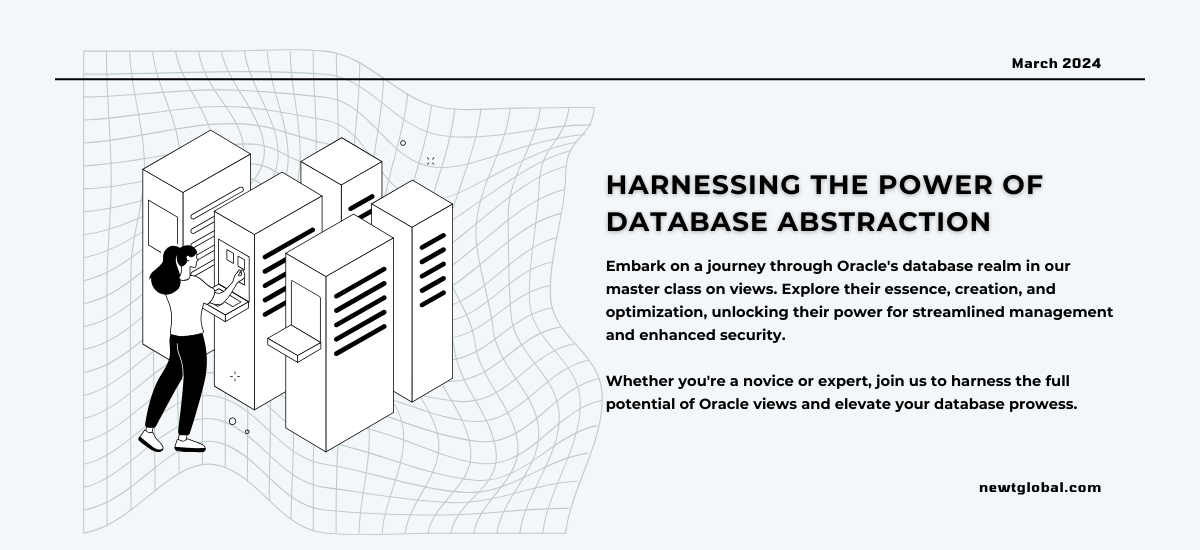
In the world of managing databases, Oracle is known for being strong and flexible. It offers many features to make handling data easier and safer. One important feature is views, which act like virtual tables showing data from the database. This guide aims to explain views in Oracle, covering what they are, why they’re useful, the different types, and how to use them.
Oracle Views: Making Data Easy to See
In the world of databases, Oracle views are like special windows that let you see into the data easily. They’re not real tables but rather magical tools that show data without revealing everything about how it’s stored.
Amazing Benefits of Views!
-
- Simplifies Data: Views make data less complicated, so users can work with it easily.
- Enhances Security: Views protect data, letting only authorized users access it
- Improves Queries: Views make querying data simpler and faster.
- Maintains Integrity: Views ensure data follows rules and stays accurate.
Different Kinds of Views
-
- Simple Views: These are based on one table and make working with data straightforward.
- Complex Views: These can use many tables and include more complicated operations, offering a richer look at the data.
- Materialized Views: Unlike the other types, these views actually store data, making access faster but taking up space.
Creating and Managing Views
To create a view, use the following syntax:
CREATE [OR REPLACE] VIEW view_name AS
SELECT column1, column2, …
FROM table_name;
This SQL statement creates a new view with the specified name and column list, based on the SELECT query provided.
For example, to create a view showing employee information:
CREATE VIEW employee_view AS
SELECT employee_id, first_name, last_name
FROM employees;
Explanation: This example creates a simple view named employee_view that retrieves the employee_id, first_name, and last_name columns from the employees table.
Changing Views:
You can update a view to show different data like this:
ALTER VIEW employee_view AS
SELECT employee_id, first_name, last_name, hire_date
FROM employees;
Explanation: This statement modifies the definition of the employee_view to include the hire_date column, providing additional information about each employee.
Dropping Views:
If you don’t need a view anymore, you can remove it with:
DROP VIEW employee_view;
Explanation: This statement removes the employee_view from the database, effectively deleting the view definition and releasing associated resources.
Tips for Best Use
-
- Make sure your commands (SQL queries) are as efficient as possible.
- Use views to keep your data secure while still sharing what’s needed.
- Document everything about your views so their purpose is clear.
- Be careful not to create a confusing mess of views within views. Keep it simple.
Solving Problems and Making Things Better
To make sure views are working well, you can use Oracle’s tools to find and fix any slow-downs. Simplify your views, make sure the data they’re based on is indexed correctly, and always look for ways to make them run faster.
Bringing Oracle Magic to the Cloud
Views are a key part of Oracle’s powerful tools, making data management easier, safer, and faster. As we move data into the cloud, understanding and using views can help us make the most of Oracle’s capabilities, making our data work better for us in the cloud.
To learn more about how to leverage Oracle views and optimize your database management in the cloud, visit Newt Global’s website at newtglobal.com. For inquiries and further information about their services, you can contact them at marketing@newtglobalcorp.com.
Newt Global’s DMAP is a world-class product that facilitates mass migration of Oracle databases to cloud-native PostgreSQL, offering faster, better, and more cost-effective solutions. Take action today and revolutionize your database management journey with Newt Global.
